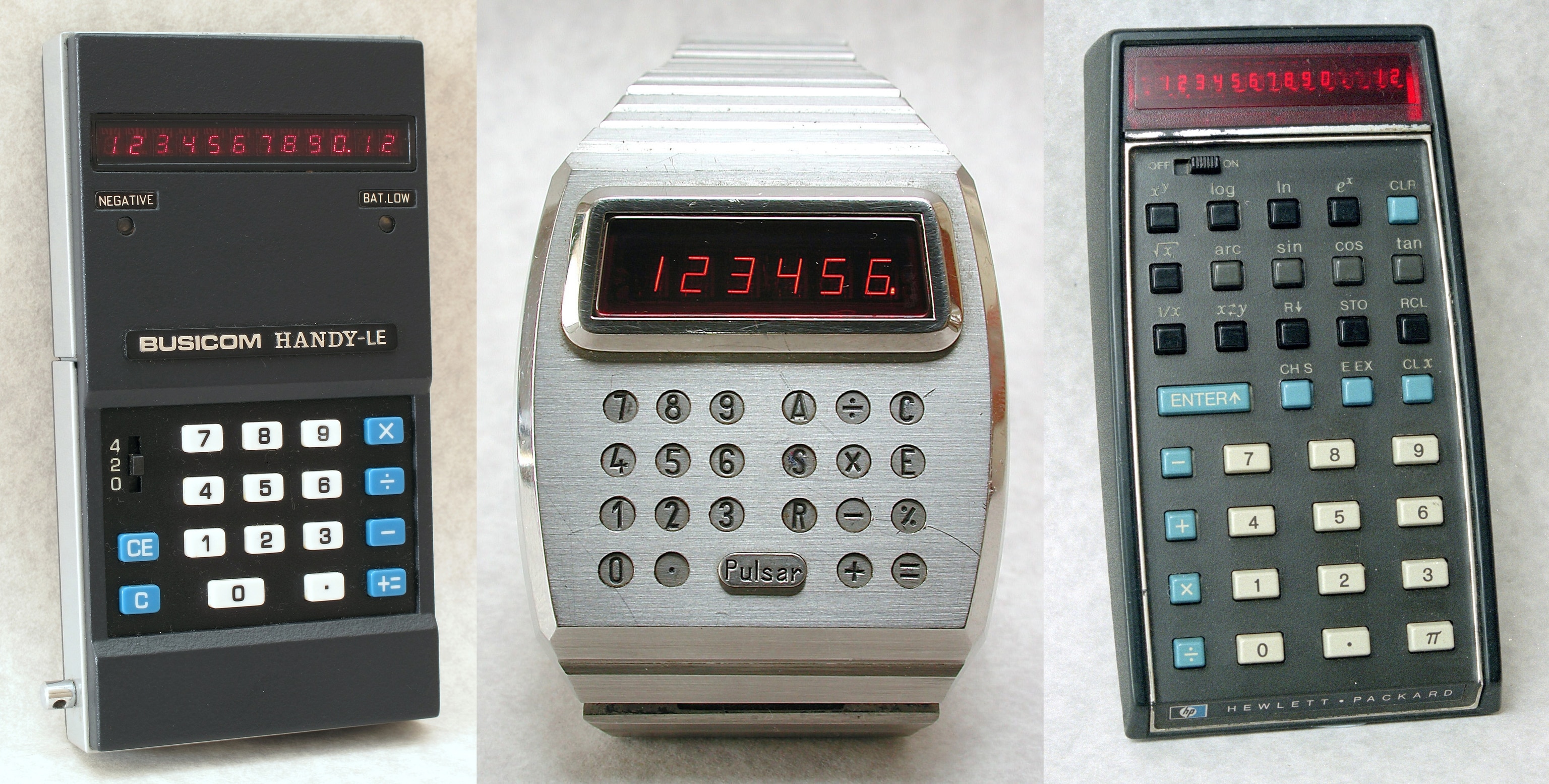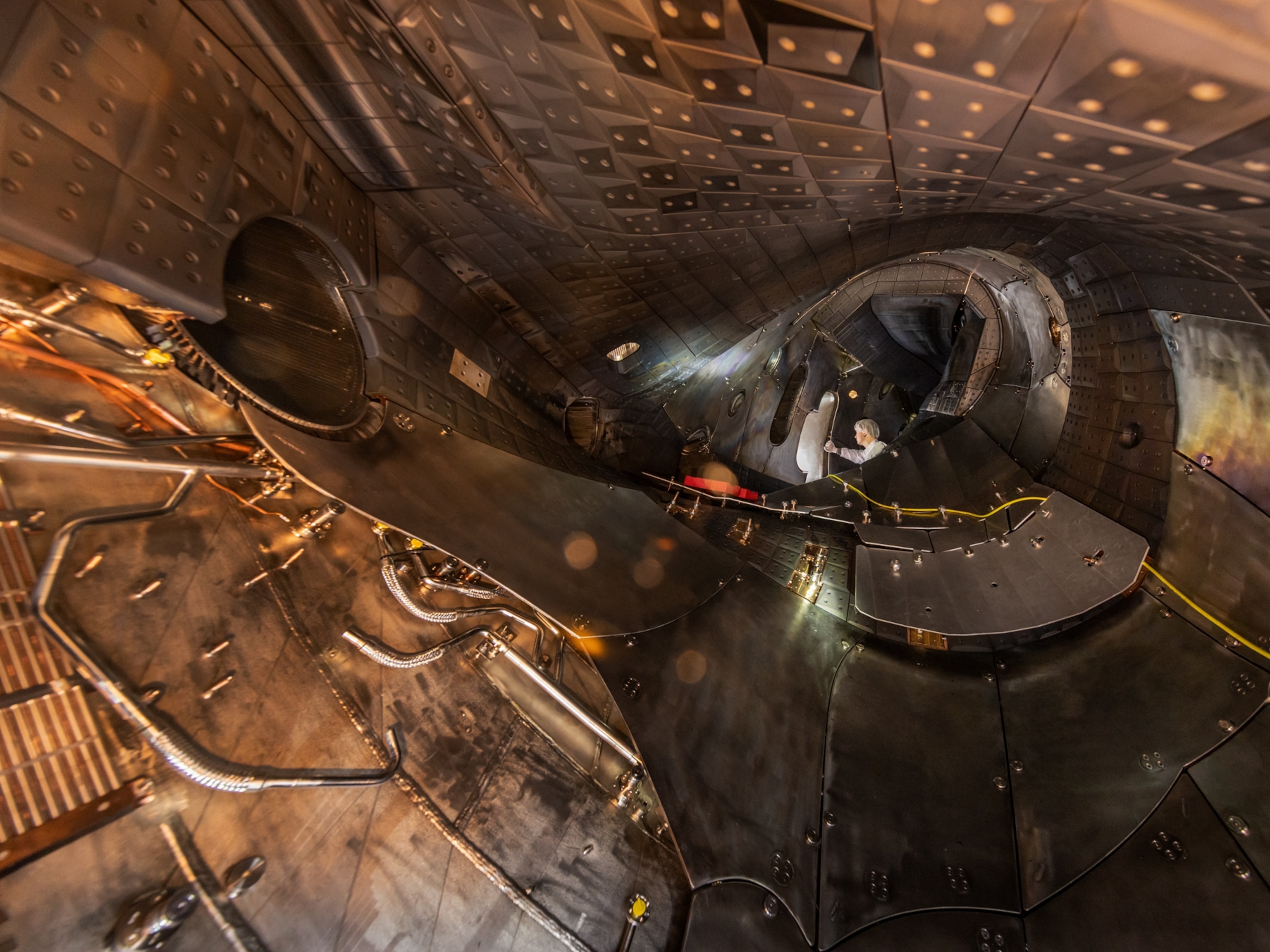
Remember When Everyone Was Using Solar Energy?
Solar-powered calculators may have familiarized a new generation with green energy. On the other hand, maybe they were just cool.
For 30 years, the technology that could help save the world has been in the hands of children.
Solar calculators were such a routine part of math class from the mid-1980s onward that they barely warrant any surprise or wonder today, even though a mostly solar-powered future is still decades away, if it happens at all.
So why did solar end up in calculators long before it appeared elsewhere in daily life, and why does solar still seem so cutting edge today when we see it on houses, theme parks, and combination recycling bins/wi-fi routers?
The first solar calculator hit the market in 1976. The Sharp EL-8026—nicknamed Sun Man—united two technologies that had evolved in tandem. The old calculators of the early '60s were heavy, expensive (they cost the equivalent of thousands of dollars by today's standards), tube-powered tabletop machines. But with the rapid development of transistors and efficient LCD screens, they quickly became pocket-size gadgets that required only a single processor chip.

Meanwhile, advances in manufacturing had made solar panels—first developed at Bell Labs in the mid-1950s—cheap and efficient enough to be used on devices other than satellites. Putting them on calculators showed off how inexpensively the panels could be made and how little energy was needed for the processors to function.
This kind of display of technological achievement was fairly standard in consumer products at the time.
“When Texas Instruments wanted to push the then-new transistor, they chose the radio as first blockbuster application,” says Joerg Werner, who maintains the Datamath Calculator Museum online.
Werner points out that the earliest computer chips followed a similar path, going from rockets to pockets and wrists (perhaps you had a cool solar LCD watch to go with your sun-powered calculator).
The first solar calculators had their disadvantages: The Sun Man’s solar panels were on the back and the Teal Photon, which came two years later, needed bright light to operate. But by the early ‘80s, Sharp and Texas Instruments had developed solar panels that could run under low or artificial light. This pushed solar and the attached low-cost calculators, firmly and finally, into the mainstream.
One Texas Instruments promotion in 1984 gave free solar calculators to businesses that bought TI computers. A few years later, Chicago Public Schools paid $1.1 million for 167,000 solar TI calculators to use in classrooms. A 1989 trend-watching column declared solar calculators “in” and astrology “out” (the same column declared Morris the Cat in and Kitty Dukakis out).

Newsweek referenced solar calculators in 1990 to explain what solar panels were, while a column in the St. Petersburg Times predicted,“You'll be seeing a lot more new solar products on the shelves in the coming year,” including devices for scaring away backyard moles and charging car batteries.
The technology that made tiny, efficient calculators possible also brought us mobile phones, personal computers, Game Boys, Tamagotchis, and Furbys in just a few years—minus the solar cells. Some of these devices needed small, constant streams of power to maintain their memories, and others just used a lot of juice, as anyone who tried to beat Link’s Awakening on a long car trip surely knows.
And while solar calculators continue to outsell non-solar models for Texas Instruments, kids who stick with math class often move on to TI-89s and other graphing calculators. These are great for calculus and trigonometry, but they’re too powerful to run on solar.

Instead, solar moved to less-visible places, like the lights and signs on highways. As they get more efficient, solar panels are increasingly showing up not just in large-scale arrays, but on house rooftops and parking lot canopies. If Tesla CEO Elon Musk’s plans work out, we’ll all have batteries to store solar power for our homes.
But that doesn’t mean children of the ‘80s, ‘90s, and today are all rushing to make their houses as green as their calculators. Solar calculators may have convinced a generation that the sun could power gadgets, but it’s not the same as convincing them that the power in tiny calculators could stream from an outlet.
The problem, says professor and futurist Cindy Frewen, is that people don’t necessarily think of rooftop panels the same way they might think of consumer electronics. "People adopt their gadgets, but they accept their energy,” she says. “They take it for granted: ‘This is what I have in my house.'"
That might change as utilities and clean energy companies offer more consumer-friendly options for solar panels and batteries to go with them like Tesla’s Powerwall, a battery designed by and for technophiles.
The next generation may not even expect to plug their gadgets into a grid. Texas Instruments, the maker of all those school calculators, is working on circuits that will draw power from their users’ movement. It's not likely to power a house, but as tablets make their way to classrooms, it's a great excuse for a long recess.





